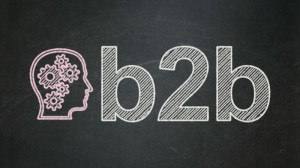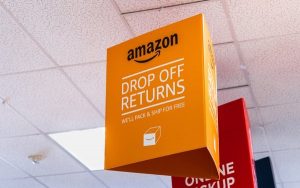Using the right strategies for tracking and optimizing cost-per-acquisition will improve ROI.
There is no sale without a customer. So how much does it cost to find one?
Cost-per-acquisition (CPA) is how brands measure the efficiency with which they acquire new customers. This metric alone is not the measure of success, but it is a milepost on the way towards figuring out the return on investment (ROI) of the marketing spend.
Also known — by some, anyway — as “cost-per-action,” CPA can cover a range of activities, from buying something online, signing up for a newsletter, to downloading an app or an e-book. This can generate leads, conversions, sales, and eventually lifetime value. In short, CPA is a starting point.
One number among many
CPA “is not a standalone metric,” said Michael Brenner, CEO at Marketing Insider Group. If someone tells you the CPA on a campaign is $ 2, it is probably no better than a contractor telling you the price of lumber when you are trying to build an addition on your home, he explained. The standalone figure is meaningless without a context.
What CPA really does is measure the efficiency of the marketing campaign, Brenner said. How many customers did you find? How much did you spend finding them? How long did it take to convert that click or lead into a customer?
“The goal of a marketing campaign is not to get a low CPA,” Brenner said. “It’s a business outcome. New revenue. New customers. A click has no real value, but measuring the cost per click buys efficiency.”
If anything, Covid has compressed the online world, raising the importance of tracking metrics. Attention spans are shorter, making it harder to get a message to resonate; the number of choices has grown exponentially; and the number of connected devices has also grown, noted Matthew Fanelli, SVP for digital at MNI Targeted Media.
“The marketer has to show the efficiency of every dollar spent and it is more important than ever before,” Fanelli said. “The days of throwing anything against the wall to see what sticks are over.”
Numbers provide focus
“CPA is a good measuring stick for me…It helps whittle down the media spend,” said Jude O’Connor, chief revenue officer at AdColony. He offered the example of an ad campaign where five different channels were engaged. Two are productive, three are not. What is working in the first two channels?
Similar companies in the same vertical probably have similar CPAs to act as benchmarks, O’Connor continued. If the industry is streaming video, then CPAs for Netflix and HBO Max should be comparable.
Now try comparing large and small companies — for example, Starbucks versus a start-up coffee chain. To expect the same CPA for the smaller outfit would be unrealistic, he continued. The smaller outfit lacks the brand equity, data and customer acquisition. It will not achieve bigger numbers on day one. “It is easier to work with a partner who knows this is a process,” he said.
And there lies the rub. Sometimes a client’s expectations can outrun actual CPA. Here marketers must produce results while keeping expectations closer to earth.
Great Expectations
“Not every KPI applies to every execution,” said Lindsay Rinner, media supervisor at Booyah Advertising. “Advertisers are either ill-advised or misinformed when they apply lower-funnel KPIs to top-of-funnel channels.”
Rinner continued, “To become more efficient with CPA, brands should focus on the low-hanging fruit of the buyer journey, including reaching cart-abandoners, retargeting past purchasers, and refueling retargeting pools. Brands should strive for full-funnel support, increasing upper funnel spending to keep retargeting pools…which in turn leads to savings on lower-funnel costs.”
Again, an ideal CPA is in the eye of the beholder, Fanelli noted. Expectations may be unrealistic in the beginning, but you can “manage back through that” and “shoot for the middle where the CPA should be.” Just be ready to rework the plan in light of new data. Let it run for two or three days, see if the campaign is on track, then tweak it, he said.
Setting up a CPA campaign, marketers want to optimize acquisition, perhaps generate a pixel and put it on the web site to find out who is visiting, and look for sales, form fills and requests for more information. Also check creative, messaging and geography. Look for the sources of customers and find out what is driving that traffic, he explained.
What marketers need to know
“Know it is a process,” O’Connor said. On launch day, “the worst CPA is today.” There is simply no data to optimize. Is the count getting better over time? If so, keep optimizing until CPA is reduced, he explained.
Also, gather data. “Tag all events. Pass it back to the vendor.” O’Connor said. Orders are the main KPI, but the other steps on the way to purchase also have analytical value. Maybe those steps can be adjusted to produce greater results? They have to align with the funnel, he pointed out. “There must be harmony between the user experience and what the user does.”
Rinner offered this checklist:
- Use first-party CRM data and retargeting tools to find easiest path toward CPA efficiencies. “Brands also need to refresh creatives to maintain interest and relevancy, which is often overlooked.”
- Optimize landing pages, especially their loading times, and adjust the the checkout process to ease the path to purchase.
- “Last, brands should eliminate demos or placements and targeting tactics that produce little to no conversions.” She said.
“Marketers should be accountable to measuring business outcomes,” Brenner added. “While acquiring incremental revenue and new customers is the ultimate goal of marketing, we need to measure the milestones and the cost efficiency with which we get there. CPC, CPL, CAC are all great CPA tools that marketers should use along the way.”
The post How much does acquiring a customer cost? appeared first on MarTech.
MarTech(36)








